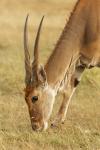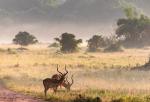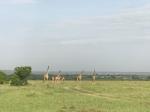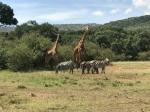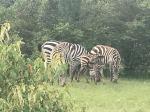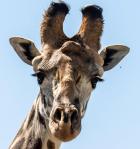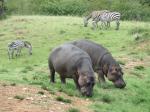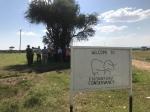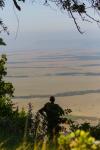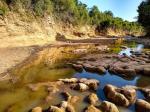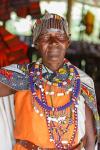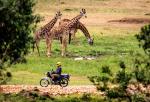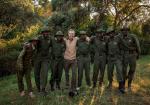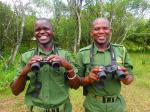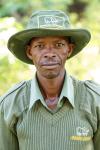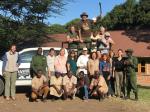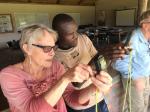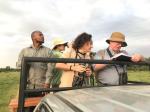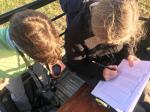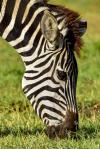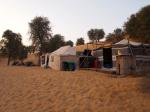Biosphere Expeditions brings 24 citizen scientists to monitor wildlife at the northern edge of the Kenyan Maasai Mara
From 3 February to 1 March 2019 two teams of 12 citizen scientists each conducted an inaugural baseline wildlife survery in Enonkishu Conservancy on the northern edge of the Mara-Serengeti ecosystem. After two days of training on research methodology and equipment, the teams were dispatched to collect data alongside Enonkishu rangers. Data collection methods included vehicle & foot transects, camera trapping, point counts from an observation point as well as a 72h waterhole observation from a hide.
256 hours of wildlife monitoring were conducted. The citizen scientists recorded 1,682 observations or groups of animals. The total number of animals counted was 9,663. Thirty-three different species of mammals were recorded either on camera traps or by direct observation. Enthusiastic birders also recorded 106 different bird species, providing a baseline for an inventory of birds in the area. Considering the first impala was seen in 2010 in
Enonkishu, the data collected demonstrates the remarkable recovery of the ecosystem. Full results and analyses will be published in the 2019 expedition report soon; this report will appear on the expedition reports page.
The overall objective of the project was to inspire rangers in diligent data collection to investigate the success of rangeland rehabilitation through monitoring of the conservancy’s biodiversity. Outreach to a local secondary school brought students into the conservancy for a day to view game and to get to know their neighbouring conservancy and its rangers. The learning experience was created by the expedition participants in order to share perspectives of conservation and the coexistence of people and wildlife.
For this project Biosphere Expeditions partners up with Enonkishu Conservancy, the expedition’s core study area. It is the northernmost conservancy in the Mara-Serengeti Ecosystem (MSE) and although small at 1,700 hectares, supports the same wildlife species found throughout the reserve and neighbouring conservancies. The conservancy was founded
in 2009 and became operational in 2014. Enonkishu’s aim is to preserve wildlife in tandem with ancient Maasai pastoral culture, allowing wildlife and cattle to share the same space in a sustainable way. Enonkishu also has a key role to play in defending the Mara from human encroachment, as it is the bulwark that separates the wilderness of the Mara in the south from agricultural areas in the north. For this reason Enonkishu is also know and the “the last line of defence”. Starting with this expedition, citizen science has become a key piece of armour of this defense system.
Below are some videos and pictures of the 2019 expedition. Thank you to Chris Taylor, Knut Woerner, Rose Palmer, Valerie Collins and expedition participants for sharing their material.













